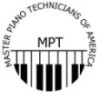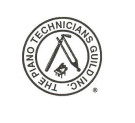Piano Voicing
A piano’s sound is often referred to as ‘bright’ or ‘mellow’ by a player. In ‘tech speak’ this would be referred to as the piano voice. Piano Voicing, however, is unique to each individual instrument and is not necessarily confined to the hammers alone.
Every piano’s voice will change over time. Each time the wool hammer strikes a string, the fibers are compacted. Over time, as the wool fibers compact and become more dense (harder) the voice of your piano will become brighter. You may also notice grooves appearing in the tip of the hammer head. This is a normal occurrence, and how the piano is played is just one of the contributing factors as to when this will happen.
Piano voicing is a delicate and complex procedure. Voicing includes reshaping the hammers to remove the grooves caused by striking the strings, and needling the compacted wool fibers to loosen them. While this may seem like a simple task, there is a little more to it. The hammer head is set by the manufacturer to strike the string at a precise spot both on the string and the hammer head. When the hammer is reshaped by removing the grooves, the hammer head is changed, and unless additional adjustments are made within the action assembly, the hammer will strike the string in a different place. Voicing often requires adjustment of additional components along with the hammers, such as reseating strings and addressing dampers, to name a few.
Please contact my friendly service department staff to schedule your piano voicing by either calling the below number or emailing using the convenient contact form below:
352-624-9623
Error: Contact form not found.


